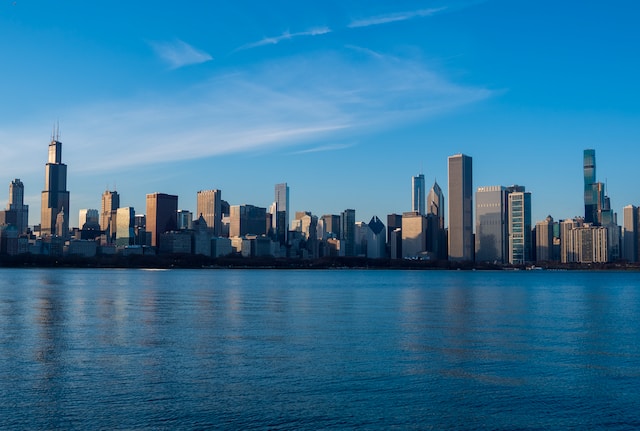Australia, a land of vast landscapes, pristine beaches, and bustling cities, has undergone significant urban transformation over the years. Its cities, particularly Sydney, Melbourne, and Brisbane, have seen rapid growth, both in population and infrastructure. Integral to this urban metamorphosis are the roles played by professionals envisioning and executing towering structures that redefine cityscapes. But how exactly do property developers in Australia influence impressive skylines?
The Role of Visionaries in Urban Development
The architects of Australia’s urban landscapes are not merely construction professionals. They are visionaries who envision future cities, anticipating the needs of populations and designing structures to cater to these requirements. Their influence is evident in the modern designs and sustainable concepts being incorporated into the latest high-rises and commercial buildings.
Incorporating Sustainable Development
Environmental consciousness is at the forefront of modern development practices. With an emphasis on sustainability, developers are now opting for green technologies and energy-efficient designs. The skylines aren’t just about tall structures; they represent a commitment to reducing carbon footprints. Buildings equipped with solar panels, green roofs, and efficient water systems are becoming common sights in Australian cities.
Innovative Design and Architectural Wonders
The ever-evolving skylines aren’t solely about utility. They are also about art, innovation, and pushing architectural boundaries. Australia’s cityscapes showcase a blend of historical edifices and cutting-edge designs. The developers work closely with architects to create aesthetically pleasing and functional structures, thereby adding a unique character to the cities.
Adapting to Demographic Changes
Urban populations are increasing, and with them, their needs and preferences. Young professionals often lean towards central city living, close to workplaces and urban amenities. Families, on the other hand, might prioritize space and proximity to schools. Developers play a crucial role in determining the nature of buildings that dot the skyline. Whether it’s luxurious penthouses, affordable housing units, or family-friendly apartment complexes, they ensure the skyline reflects the diverse needs of its residents.
Regulations and Guidelines
While developers have significant influence over city skylines, they must work within the framework of regulations and guidelines set by city planners and governing bodies. These rules ensure safety, promote sustainability, and preserve the character and history of cities. The balance between innovative design and adherence to regulations ensures that the skylines evolve in harmony with the city’s ethos.
Collaboration with Local Communities
Understanding local culture, history, and sentiments is crucial. Developers often engage with local communities to ensure new structures resonate with the people and the place. This engagement ensures that developments stand tall and blend seamlessly with the city’s narrative, becoming an integral part of its identity.
Balancing Urban Growth with Natural Preservation
Australia’s unique biodiversity and natural beauty are renowned worldwide. The continent boasts varied ecosystems, from coral reefs to dense rainforests and arid deserts. As the urban spaces expand, striking a balance between developmental needs and nature preservation becomes imperative. Developers have become pivotal in ensuring that urban expansions do not compromise these natural habitats.
Many new buildings, particularly in coastal cities, are designed to minimise the impact on the local environment. For example, designs incorporate features that deter birds from striking windows or solutions that mitigate the urban heat island effect, such as rooftop gardens.
Community Spaces and Public Amenities
Urban development is not restricted to creating residential or commercial buildings. A significant part of skyline evolution involves developing community spaces that enhance the quality of urban living. These might include public parks, cultural centres, or recreational facilities.
Developers work with city planners to ensure these spaces are accessible, fostering a sense of community and belonging. For instance, the presence of green parks amidst tall buildings not only provides recreational spaces but also aids in maintaining air quality and offering city dwellers a touch of nature.
Infrastructure and Connectivity
A robust infrastructure is the backbone of any thriving city. Developers play a part in ensuring that the areas around their structures are well-connected and accessible. This might involve collaborating with local authorities on road developments, public transport options, or even pedestrian-friendly areas.
The emphasis is on creating an integrated urban environment where residents can access essential services, entertainment, and workplaces easily. The goal is to reduce commute times, alleviate traffic congestion, and promote a more sustainable urban lifestyle where walking or cycling becomes viable.
The Future of Australia’s Skylines
With technological advancements and changing societal needs, the role of property developers in Australia in shaping city skylines will continue to evolve. Concepts like vertical gardens, self-sustaining buildings, and smart structures equipped with IoT devices are likely to become more prevalent.
Moreover, as Australia grapples with challenges like climate change, developers will be at the forefront of creating resilient urban spaces that can withstand extreme weather events and rising sea levels.
Wrapping It Up
The skylines of Australia are more than just a visual spectacle. They narrate stories of progress, innovation, community, and a harmonious blend of the old with the new. As developers continue to shape these towering horizons, they carry the responsibility of ensuring that cities remain livable, sustainable, and true to their unique Australian identity.
